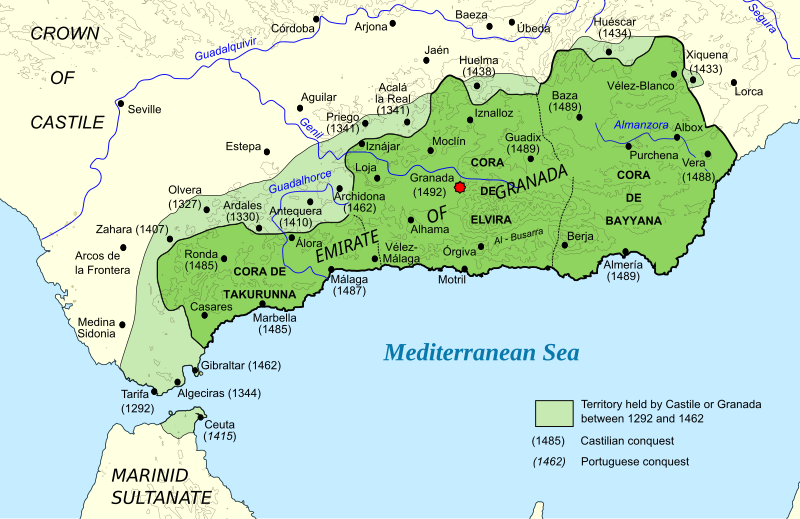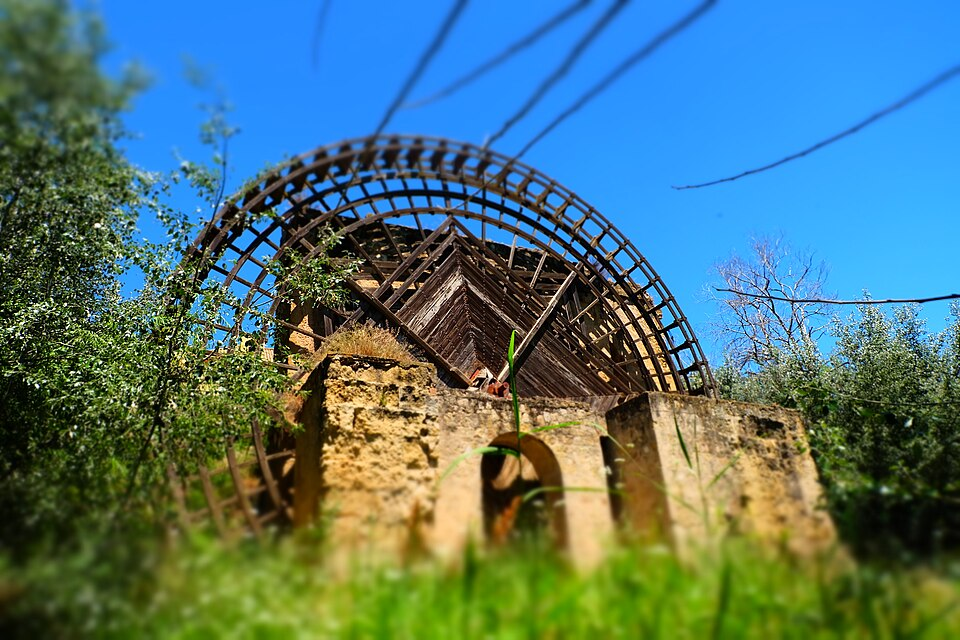IB Syllabus focus:
'The nature of societal interactions among different religious and cultural groups.
Economic conditions, focusing on trade, agriculture, and the impact of taxation on different social strata.
The role of intercultural exchange in shaping societal norms and economic practices.'
The late 15th-century Iberian Peninsula was a tapestry of intertwined religious and cultural entities, which significantly influenced its socio-economic landscape. Let's delve deeper into the nuanced dynamics of this era.
Societal Interactions Among Different Religious and Cultural Groups
Coexistence and Tension:
Convivencia: Spain's illustrious past showcased a unique coexistence among Muslims, Jews, and Christians. This harmonious living, termed "Convivencia", paints an image of mutual tolerance, particularly during the early epochs of Muslim governance.
Shifts in Relations: As the sands of time shifted to the late 15th century, so did societal undercurrents. The ascension of Catholic monarchs, driven by the vision of a homogenous Christian Spain, exacerbated religious tensions.
Areas of Interaction: Nonetheless, realms of cooperation existed. Trade and intellectual pursuits often saw members of different religious backgrounds joining hands. While this fostered cultural assimilation, it occasionally also courted resentment.
Urban Life:
Metropolises like Granada and Toledo metamorphosed into cultural crucibles. Vibrant souks (markets), public baths, and educational institutions hosted a diverse clientele.
The formation of distinct Jewish quarters or Juderías and a growing segregation of the Muslim populace indicated simmering divisions.

This map shows the Nasrid Emirate of Granada (1238–1492), the final Muslim polity in Iberia, with principal towns and the frontier’s changing line in the late medieval period. Understanding Granada’s geography clarifies patterns of urban life, commerce, and shifting Christian–Muslim contact zones in the late 15th century. Some labels include dates of Christian captures, which extend context slightly beyond the strict social-economic focus. Source
Economic Conditions
Trade
Key Trade Centres:
Urban centres such as Seville, Valencia, and Barcelona burgeoned into critical trading nexuses, bridging the gap between the Mediterranean and the frosty climes of Northern Europe.
Commodities: A medley of commodities, ranging from Granada's silky textures, Málaga's intricate ceramics, to an assortment of agricultural produce, were highly sought after in European markets.
International Relations:
North African and Mediterranean Ties: Religious disparities notwithstanding, an animated trade circuit with North African and Mediterranean territories persisted.
The growing Christian hegemony did not staunch the flow of trade with Islamic lands. Often, pragmatic economic imperatives trumped religious chasms.
Agriculture
Crops and Techniques:
A vestige of Muslim reign was their sophisticated agricultural methodologies, especially advanced irrigation systems. These innovations enabled the successful cultivation of diverse crops, including sugarcane, rice, and zesty citrus fruits.

The Albolafía noria lifted river water to irrigation channels serving Córdoba’s riverside landscape—an example of hydraulic technology that underpinned the cultivation of sugarcane, rice, and citrus in late medieval Iberia. The image illustrates how engineered water management sustained high-value agriculture referenced in the notes. Source
Land Redistribution: The steady recapture of Muslim bastions by Christian forces heralded an extensive land redistribution. These new landholding patterns often favoured Christian aristocracy and significantly influenced agrarian dynamics.
Vineyards and Olives:
While vineyards and olive orchards had made their presence felt during the Muslim epoch, their expanse widened considerably during this period, feeding the growing demand in European markets.
Impact of Taxation on Different Social Strata
Special Levies:
Non-Christian demographics, especially Jews and Muslims, found themselves burdened by the jizya (a tax levied on non-Muslims) or comparable taxes.
The imposition of these financial burdens oftentimes sapped the economic vitality of these communities, leading to simmering resentments.
Regular Taxes:
Tithes to the Church: A substantial portion of one's agricultural yield was expected to be offered as tithes to the church, a mandate which occasionally overburdened the peasantry.
Tributes to Nobility: The intricate web of feudalism demanded that peasants also part with a part of their produce as tributes to their Christian overlords, widening the economic chasm.
Intercultural Exchange and Its Influence
Architectural Transitions:
A delightful confluence of Muslim and Christian architectural ethos gave birth to distinct styles, notably the Mudejar style. This architectural symphony is a testament to Iberia's rich cultural tapestry.
Learning and Knowledge Transfer:
The annals of history fondly remember Muslim Spain as a beacon of enlightenment, especially in disciplines like astronomy, maths, and medicine. The waning years of the 15th century witnessed a seminal transfer of this knowledge pool to Christian Europe, orchestrated often by erudite Jewish scholars and translators.
Seminal institutions, like the Toledo School of Translators, became the lynchpin in this grand knowledge dissemination exercise.
Craftsmanship:
Craftsmanship in Spain bore the indelible mark of its diverse inhabitants. Pottery, textile, and metalwork techniques were often a blend of various traditions, elevating Spanish artisanal goods to a coveted status in European markets.
Culinary Exchange:
Spain's gastronomic landscape was vastly enriched by its Muslim rulers. Ingredients such as rice, almonds, and saffron, which had been introduced during their reign, had, by the late 15th century, seamlessly woven into the culinary fabric of Spain.
Drawing a curtain on this era, it's evident that the 15th-century Iberian socio-economic milieu was a product of intricate religious, cultural, and economic tapestries. While the drumbeats of religious discord grew louder, the robust edifice of economic collaboration and cultural exchange, built over centuries of Muslim stewardship, largely stood its ground.
FAQ
While the 15th-century socio-economic structure of Iberia was generally stratified, certain economic shifts provided avenues for upward mobility among the lower strata. The expanding trade, especially in urban centres, allowed merchants, irrespective of their religious or ethnic backgrounds, to amass wealth and influence. Moreover, the redistribution of lands post the Reconquista offered opportunities for enterprising peasants and middle-class individuals to acquire lands and improve their socio-economic standing. However, these instances were often exceptions and not the rule. The overarching feudal system and the institutionalised preferential treatment to certain classes and religions acted as barriers to widespread upward mobility.
Muslims played a seminal role in revolutionising agricultural practices in Iberia, a legacy that continued well into the 15th century. Their expertise in crafting advanced irrigation systems, drawing from techniques honed in drier Middle Eastern landscapes, unlocked the agricultural potential of previously arid regions. Introduction of crops like sugarcane, rice, citrus fruits, and aubergines expanded the agrarian portfolio of Iberia. Furthermore, the systematic approach to farming, coupled with an understanding of crop rotations and soil health, optimised yield and made certain regions like Andalusia granaries of the peninsula. Thus, Muslim contributions laid a sturdy foundation for Iberian agricultural prosperity.
The Jewish community, historically an integral part of the Iberian tapestry, faced increasing economic pressures in the 15th century, primarily due to the evolving taxation system. While Jews had always been subjected to certain taxes, the period leading up to and following the Reconquista saw heightened financial burdens. Special levies were imposed on them, somewhat akin to the jizya imposed on Muslims. These taxes often had a dual purpose: to fill state coffers and to coerce conversions to Christianity. Over time, such economic pressures, combined with other socio-religious factors, made the Jewish community's position in Iberia increasingly precarious, culminating in the tragic 1492 expulsion.
The decline of Muslim rule, especially with the Reconquista nearing its completion, brought about significant changes to trade dynamics in Iberia. While certain routes, especially those connecting to North African and Mediterranean Muslim territories, continued due to historical and economic precedence, there was an increasing inclination to explore and establish routes to other parts of Europe. The commodification also witnessed shifts. While staples like Granada's silks and Málaga's ceramics remained popular, there was a pronounced emphasis on products like olives and wine which had a growing demand in Christian Europe. The ebb of Muslim dominance paved the way for newer trade dynamics, albeit with some continuity from the past.
Urban centres in 15th-century Iberia, such as Granada, Seville, and Toledo, played a pivotal role in fostering intercultural interactions. These cities attracted diverse populations due to trade, educational, and administrative opportunities. The bustling markets or souks were melting pots of different cultures, facilitating the exchange of goods, ideas, and artistic expressions. Moreover, these urban settings witnessed an amalgamation of architectural styles and public facilities, like baths, that were frequented by people from varied backgrounds. While certain areas like the Juderías exhibited segregation, urban life, on the whole, acted as a crucible for intercultural mingling, adding layers of complexity to the socio-economic landscape.
Practice Questions
Intercultural exchange immensely influenced Iberia's socio-economic setting in the late 15th-century. Architecturally, the amalgamation of Muslim and Christian sensibilities birthed styles such as Mudejar. In terms of knowledge transfer, centres like the Toledo School of Translators played pivotal roles in disseminating knowledge from Muslim Spain to Christian Europe, spanning disciplines like astronomy, maths, and medicine. The realm of craftsmanship saw a synthesis of traditions, elevating Spanish artisanal goods to a privileged status in European markets. Furthermore, gastronomy in Spain underwent a transformation with ingredients introduced during Muslim rule becoming culinary staples, epitomising the deep-rooted cultural exchange.
Taxation in late 15th-century Iberia was a layered affair, carrying significant socio-economic implications. Special levies like the jizya disproportionately affected non-Christian populations, often draining their economic vitality and amplifying tensions. Regular taxes had broader societal ramifications: Tithes to the church and tributes to Christian nobility meant peasants were often doubly taxed, widening economic disparities. This system underscored the socio-economic hierarchies in place, with the church and nobility enjoying significant benefits at the expense of the peasantry and non-Christian communities. Such taxation policies, while consolidating the power of the elite, sowed seeds of discontent among the oppressed strata.

